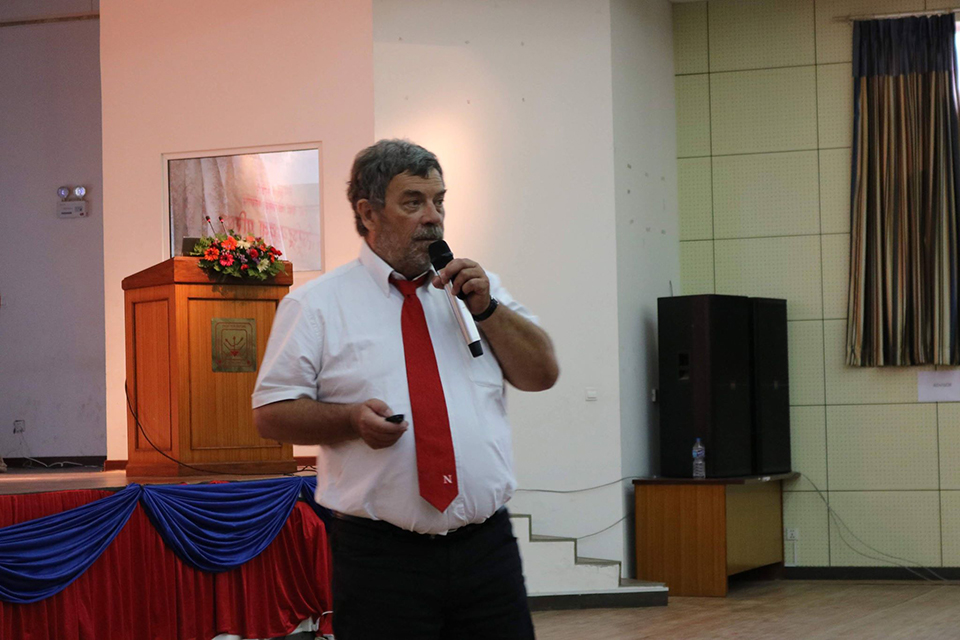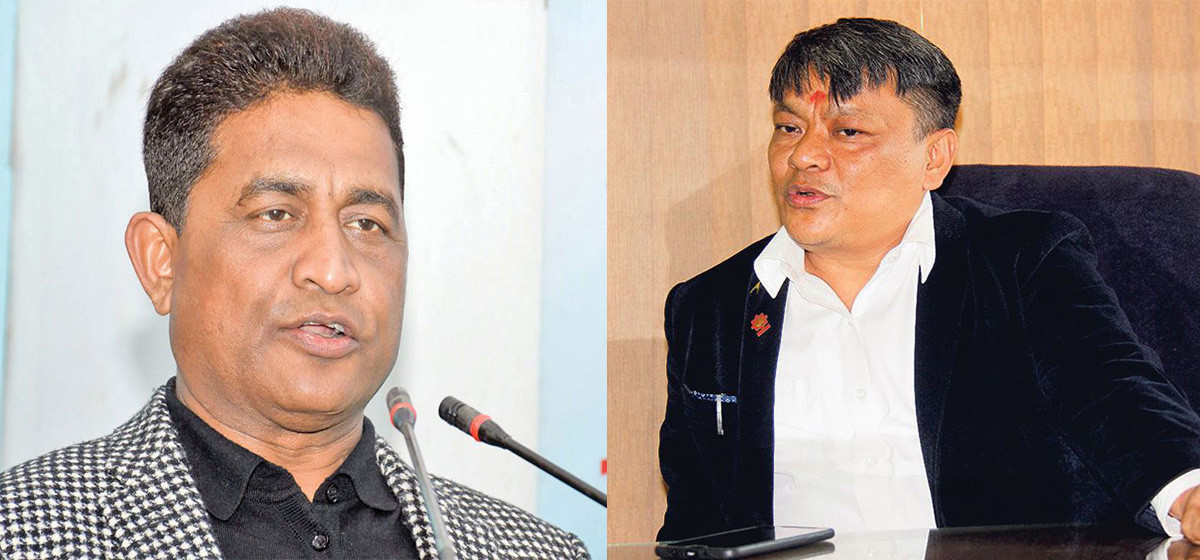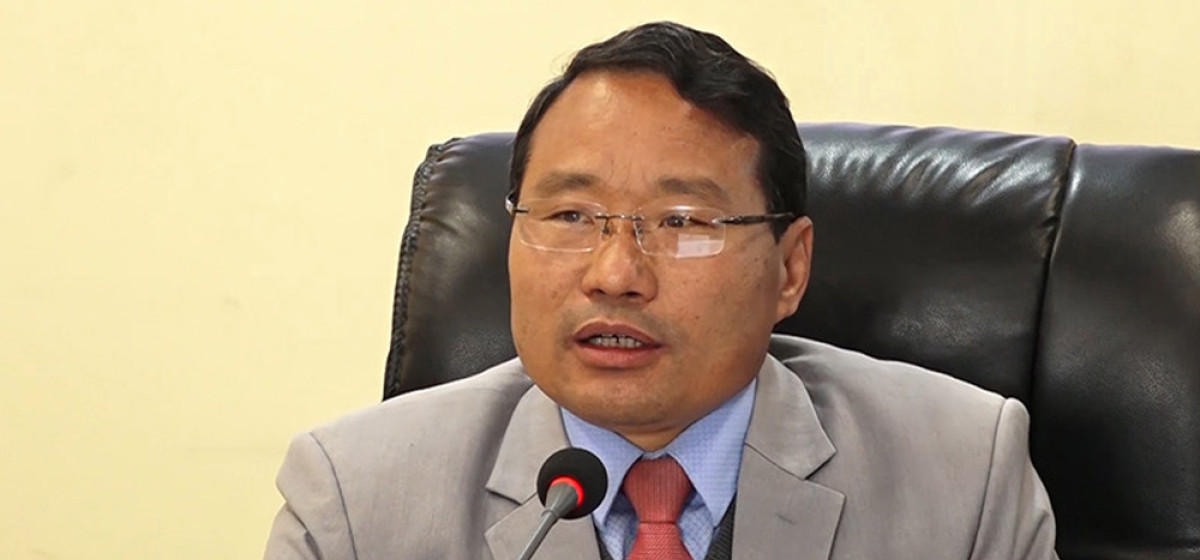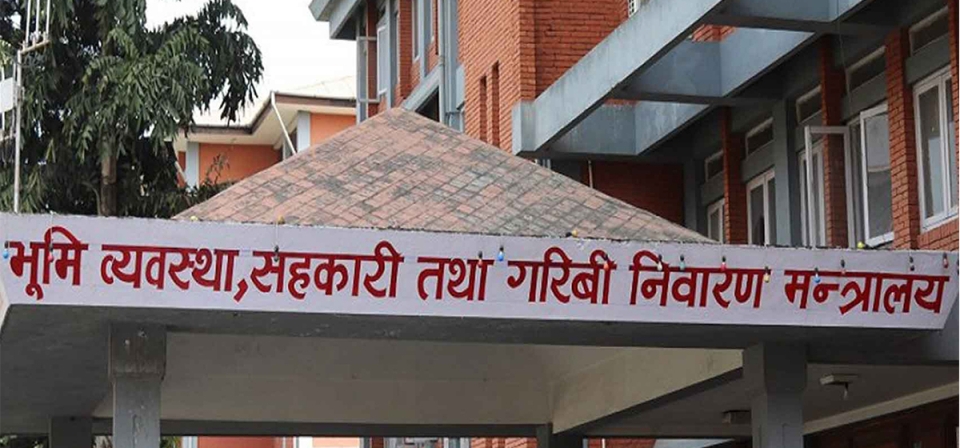
OR

Nepal government has allocated only 0.38 percent of the total budget for science and technology. This proves that the government is trying to limit the sector than developing it.
● Dharahara at Sundhara fell during the earthquake of 1990 BS. It was reconstructed within two years in its original style. Dozens of people died when Dharahara fall again in 2072 BS’ s earthquake. But, its reconstruction is still in limbo. The government has not even been able to release the scientific model of new Dharahara, let alone reconstruction.
●Japan is more vulnerable to earthquakes than Nepal. Buildings in Japan do not fall completely like Nepal’s even though the country has experienced earthquakes of magnitudes larger than those in Nepal. Buildings in Japan do not fall easily due to the use of scientific approach in constructing them. Use of low-quality raw materials, unscientific designs, and random working approach are the reasons behind weak buildings in Nepal. About 8,000 people died in the 2072 BS's earthquake mainly due to the fall of houses and other buildings.
Prof. Dr. Jean Marc Saiter, a French Physicist who was in Nepal for his study and research, recently shared his experience in a program. The experience shared by Saiter—a professor and researcher at the University of Rouen—was an interesting and unforgettable one. Saiter was a guest speaker at the National Youth Convention on Science, Information, and Technology organized by National Youth Council in Khumaltar, Lalitpur. He tried grabbing the attention of the audience with a simple example of bicycle.
“The bicycle we ride today was not created as it is. Initially, the wheels of bicycle were made rectangular, but the bicycle could not be driven with such wheels,” said Saiter. “After the failure of rectangular wheels, circular wheels were made which made riding bicycle possible. People started using bicycle in their daily life.”
“Scientific inventions can make daily lives easier than they are if they are guided properly by people’s need in daily life,” added Saiter.
Disaster and Unscientific Approach
Saiter stated that regular loss of life and property in Nepal is due to a careless attitude towards science and technology. “Nepal does not have technology to check whether the bricks, sand, cement, and rods used in construction are trustworthy or not,” said Saiter. “Scientific and technological aspects are totally neglected while constructing buildings in Nepal. Consequently, the buildings do not survive as long as estimated.”
“Scientific technology have huge role in strength and durability of structures in Japan. Japan’s buildings do not fall completely when there is an earthquake; they rather swing left-right. This reduces the risk of losing lives,” said Saiter in the program. “Nepal’s buildings fall completely vertically taking lives of many.”
Two Thousand Years Old Science
Philosophy provides the procedure for study and research, according to Saiter. Philosophy lies in the center of thesis, anti-thesis, and synthesis. Mathematics works as a tool in identifying and explaining the problems along with possible solutions. Similarly, chemistry deals with atoms and biology deal with living beings.
“Science always focuses on the factual and logical explanation of things. Finding out truth is not an aim of science,” said Saiter. “Science predicts the possibilities based on experiments and findings. Actually, science plays an important role in discovering new things.”
In Saiter’s understanding, a scientific model is prepared and explained arithmetically with the help of hypothesis developed from observation, measurement, and analysis of subjects. But, a fact to be noted is that every fact obtained from the observation cannot be expressed arithmetically.
Saiter also said that origin of science dates back to 2,000 years. Physical theories like theory of Gravitational Force and Density were proved in the 18th century. “Right brothers invented airplanes only after the discovery of Laws of Thermodynamics in the 19th century,” said Saiter. “The things that we are using currently have evolved along with time in order to reach this stage.”
Electric, electronic, and electromagnetic sectors saw a large growth in the 19th century. The radical development in the information technology sector in the 21st century has brought changes ranging from evolution of media sector to internet in people’s reach.
Technology has become inseparable from human life. “European countries like England, Germany, and Italy along with Asian country Japan are seeing unprecedented development due to the strong science and technology sector,” added Saiter. In the 60s, South Korea and Nepal were in the same level in terms of science and technology, but South Korea has left Nepal far behind in the recent decades.
Why technology is not doing well in Nepal?
Saiter has advised that a study needs to be conducted to know why Nepal is so behind in the sector of science and technology. There does not seem to have been any remarkable achievement in the 104 years of Rana rule. Gehendra Shamsher is considered to be the first scientist in Nepal. Gehendra Shamsher and his team had prepared a few guns and cannon after being trained abroad.
Experts say that Nepal started its journey in modern science and technology only after the change of 2007BS. Initially, technology was applied to sectors like agriculture, civil engineering, archaeology, drinking water management, food, medicine, and paper. Ramesh Man Singh and Dineshraj Bhuju have mentioned in their book ‘Development of Science and Technology in Nepal’ that it took Nepal more than a century to adapt to the international scenario even though it had been a long time since the industrial revolution in the western nations. The book has also concluded that science and technology could not foster in Nepal also because of colonization of neighboring country India by the British.
‘Development of Science and Technology in Nepal’ has mentioned that the country moved towards modernization only after the establishment of democracy in 2007BS. A few programs related to science and technology was included in the First Five-Year Plan introduced by the government led by Tanka Prasad Acharya in 2013BS. Emphasis was given to science and technology only in the Six Five-Year Plan (2036BS-2041BS).
Foundation of science and technology could not be built well in the 30-year long Panchayat Rule. After the fall of Panchayat Rule in 2046BS, policies addressing the sector of science and technology were introduced regularly in the multiparty democratic system, but without any outcome.
Nepal still lacks scientific and technical manpower, according to the Nepal Academy of Science and Technology (NAST). A survey on science and technology reveals that a number of people involving in original research is very low although the number of people receiving Ph D in the country is 1,068. Although statistics revealed that 61 percent of the 49 large-scale industries in the country have operated a separate research unit, effective study of the scenario has not been possible.
According to United Nations Educational, Scientific, and Cultural Organization (UNESCO), Nepal Government allocates only 0.38 percent of its total GDP for the science and technology sector. This proves that the government is trying to limit the sector than developing it. Neighboring countries India and China allocate 0.8 and 2.07 percent of their GDP respectively for the sector of science and technology. The US allocates 2.79 percent of its GDP for this sector.
Education on science and technology started with the establishment of Tri-Chandra College in 1918AD. NAST was established in 1982AD and has been working on scientific research and study, but has not been able to gain pace.
A separate Ministry for Science, Technology, and Environment (MoSTE) was established in 1995 AD, but has been transformed into Ministry for Education, Science, and Technology (MoEST) after the general elections of 2074BS. Experts have said that merging education ministry with science and technology has decreased the concentration of the government towards science and technology.
Science lacking connection with life
Former Minister for Science, Technology and Environment Ganesh Shah has said that inability to relate science and technology with the life of people is a problem in Nepal. “The government should bring clear policies on science and technology. A country cannot see progress in this era without development in the sector of science and technology,” said Shah. “Government should carry out its activities keeping science and technology at the center.”
According to NAST, there are 330 scientific institutions in the country, but they lack cooperation. Government agencies have not tried promoting cooperation among these agencies in order to develop the sector of science and technology. Experts of this sector have said that Nepal’s science and technology is not excelling due to bureaucrats who do not have knowledge of science and technology.
“Official working to make policies for the sector of science and technology has the least knowledge on this sector,” said Jibraj Pokhrel, former vice chancellor of NAST. “Overall development of the country is not possible without development of the sector of science and technology. We need to be able to create skilled manpower in science and technology and utilize them within the nation.”
Pokharel has also said that the sector is not seeing progress due to limited budget and lack of government’s role in preparing environment for research and study. Increasing budget for the sector of science and technology seems to be a to-do task for the current government. The government has allocated an annual budget of Rs 320 million for NAST, whereas the budget for MoEST is about Rs 1 billion only.
Experts have stressed the need for a strong and clear policy on science and technology. For this, the traditional technologies should be preserved and promoted as well as applied in the sector of production. Scientific research and study should be excelled keeping national interest at the center.
The reason why science and technology could not prosper: Prof. Dr. Udayaraj Khanal, Physicist
‘Scientists are to be blamed for the underdeveloped state of science and technology in Nepal.’ People criticized me a lot for making this statement, but it does not matter. The country could not see any change due to petty interests.
Pakistani scientist Abdus Salam had proposed initiating a scientific research center in Nepal. But, the model was almost like ICIMOD’s which is mostly operated by scientists from some other nations. The scientific sphere of the country could not accept the initiative. Nepali scientists started believing that through such initiatives foreign scientists take advantage without leaving anything for them.
 Prof. Dr. Udayaraj Khanal, Physicist
Prof. Dr. Udayaraj Khanal, Physicist
Some scientists denied in taking forward the proposal by Salam saying that the foreign scientists are going to have the upper hand. The center could be beneficial since the culture of research would get promoted in the country, whoever is the director. But, the scientific sphere could not agree to this school of thought.
Focusing on researchers from poor countries, Abdul had established International Center for Theoretical Physics (ICTP) in the city of Trieste, Italy and is still operating now. He had a plan of opening branches of the center in many countries including Nepal. He had declared opening a center in Nepal when he had come for a program on Physics organized by ICTP in Kathmandu in 1989.
It was a will of opening a high-level institute for science in Nepal. He had concluded that Nepal was the fittest place for opening such institute in Asia. There was a potential problem of India not joining if the institute was established in China or Pakistan. He was of the view that Nepal could be a hub that can connect scientists across Asia.
He had made that announcement in the hall of Nepal Academy at Kamaldi where the then King Birendra was also present. “I am determined to start a scientific research center in this country if the government and scientific sphere are positive about it,” said Abdus. Pointing at King Birendra he had said that such institutions were necessary if he really wanted to develop the nation. Everybody in the hall clapped, but unfortunately, no efforts were made by Nepali scientists in bringing such center in Nepal.
I went to his institute in Italy after about a month. I was involved in research at that time. He was fond of meeting scientists and researchers from across the globe.
I took an appointment to meet him.
“I had talked about opening an institute in Nepal. What is the country’s view on it now?” asked Abdus.
“A committee has been formed. They might have been working on it,” I replied.
He was upset since he had understood that the signs were not positive. There was Panchayat system when Abdus had declared opening the center. Multiparty democracy was restored after a few months. Scientists blame the political change as the reason behind the center is not established, but I do not agree. The center could not be established due to the lack of vision in leaders of science and technology in Nepal. The center which was meant to be established in Nepal was established in another country under Abdus’s direction.
He believed that Physics was the science related to the economy. Physical technology is important for the development of a society. Technology for agriculture, medicine, and communication are developed in the physics laboratories.
More than 120 students are annually studying Physics under the Department of Physics at Tribhuvan University. Most of the pass outs are keen to go to the US for higher studies. They have been getting good opportunities in the US. In this case, we cannot deny that teaching-learning has improved in the country.
It is bitter that the manpower that is praised in the US is not valued in Nepal. Most students look for teaching jobs in colleges after completing their masters and a very few succeed. Those who have completed Ph D in abroad are also not able to utilize their capacity to the fullest. They are worried. This is not just about our economic ability. It is also about our thinking.
The world has been seeing unprecedented success in the field of technology. Whatever be the level of technology, we can buy them in the market. Policymakers in the country believed that only having technicians (operators) is enough and we do not need scientists. Science and technology are related; science is the tree whereas technology is the fruit that science bears.
Technology can bring development and technology cannot be obtained without science. Other countries have reached the sky in the development of science and technology whereas we are still using the devices manufactured by others.
You May Like This

Retrieve
It is early morning and I am writing my blog. I want to retrieve things from memory. I want to... Read More...

2,300 households in need of relocation: Study
KATHMANDU, May 4: A recent study conducted by the National Reconstruction Authority (NRA) has found that around 2,300 households in five... Read More...

Minister Joshi sees need of promoting electric vehicles
KATHMANDU, Sept 1: Minister for Population and Environment Jaydev Joshi has said the use and promotion of renewable energy including... Read More...




Just In
- Five-match T20 series: first match between West Indies 'A' and Nepal starts today
- Govt yet to pay Rs 60 billion to contractors
- Nepal’s poorest district identified as Bajura, richest as Mustang
- Wind storm likely at a few places of Koshi and Sudurpaschim
- EVs adoption in Nepal surge in Nepal with government support measures
- Mayors' Forum urges Finance Minister Pun to settle electricity dues
- By-Election: Voting underway in Ilam-2 and Bajhang-1(a)
- Save the Children report highlights severe impact of air pollution on children














Leave A Comment